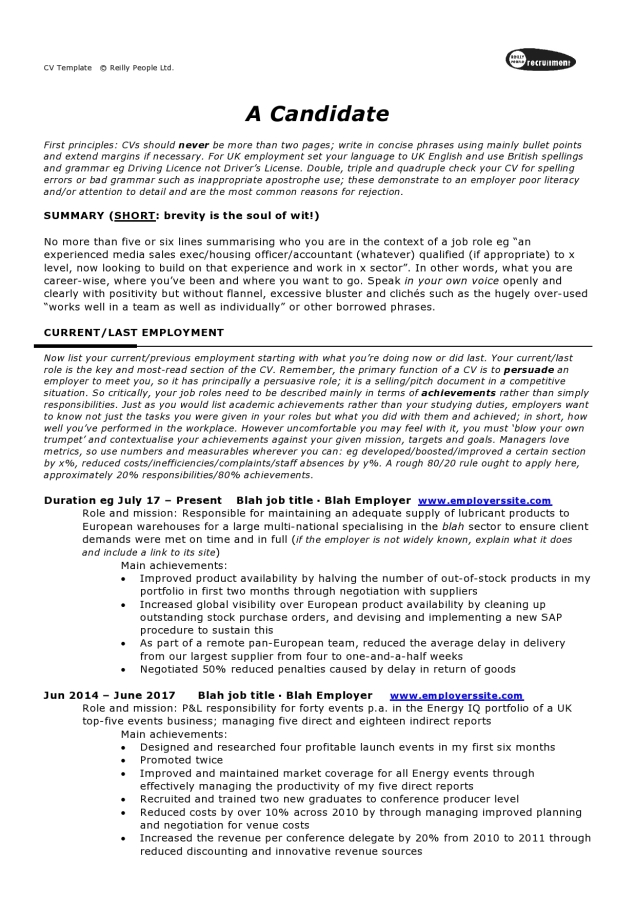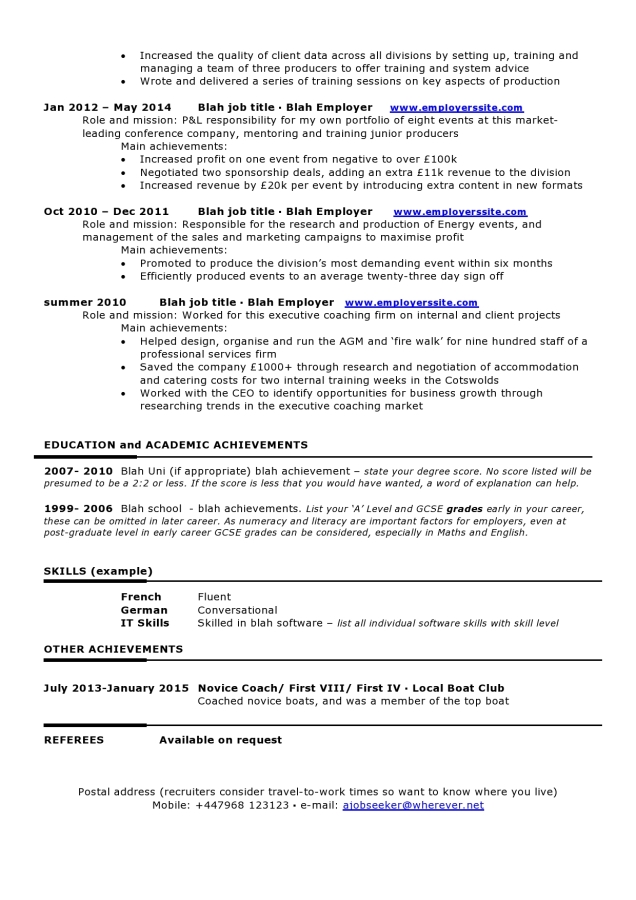Test Owner
Why You Can’t Find the Right Candidates for your Events Business, and How to Fix It

Recruitment in Events right now is a challenge. CVs and applications might pour in for every job listing you post. But after two rounds of interviews, a few assessments, and more “we’ll get back to you” emails than you’d like to admit, you might realise something.
No one quite fits your mould for the perfect candidate.
You’re not alone. 75% of employers say they struggle to find the right candidates – even as their inboxes overflow with applications.
Welcome to the Great Mismatch, where job openings and job seekers are both on the rise, but somehow, nothing is aligned. The problem isn’t a lack of people. There’s a growing gap between the skills businesses need and the skills candidates bring.
According to McKinsey, a staggering 87% of companies are already dealing with or expecting significant skills gaps shortly.
Here’s what is happening.
The Root Causes of the Skills Mismatch
The talent and hiring shortages Events companies face today aren’t due to people “not wanting to work” or Gen Z culture problems.
The skills mismatch isn’t anyone’s fault, but it is everyone’s problem.
The gap between what companies need and what candidates can do is growing wider, and if we want to fix it, we must get real about why it’s happening.
So what are some of the root causes?
Tech is Moving Faster
The shelf life of a hard skill these days is about five years and shrinking. That course someone took in 2020 is probably already out of date. The platforms your team relies on today didn’t even exist ten years ago. AI, automation, cloud computing, and data analytics skills are becoming crucial – but there aren’t enough people who have them yet.
Schools Weren’t Built for This Pace
Traditional education isn’t keeping up. Universities and training programs produce graduates with degrees, but not always with the practical, job-ready skills employers need.
Systems designed for slow, stable economies are trying to serve a workforce where Events jobs are being created and reinvented in real time. According to the World Economic Forum, up to 59% of workers worldwide must retrain by 2030.
Economic and Market Pressures
Economic volatility isn’t helping. We have uncertain inflation rates, shifting trade policies, wage pressure, labour shortages in some sectors and oversupply in others.
Many businesses are pausing on long-term hiring plans. Others are hiring cautiously, with painfully specific requirements. Then there are geographic mismatches: the person with the exact skills you need might live in a different time zone entirely and might not be willing (or able) to relocate.
Industries evolve. That’s not new. But lately, it feels like they’re doing it overnight. Healthcare jobs now require digital skills. Manufacturing is becoming more automated. Marketing is data-driven.
How to Address the Skills Mismatch: Top Strategies
When you can’t find the right Events talent, everything slows down, and the costs start stacking up.
Unfilled roles mean stalled projects, missed revenue, and heavier workloads for the still-standing team. Every month, a position stays vacant, reducing productivity, slipping deadlines, and causing your team to stretch thinner. Morale suffers, and burnout creeps in. Your best people start looking elsewhere.
Here’s the good news: the skills mismatch might feel overwhelming, but it’s not unfixable.
You don’t have to reinvent the wheel. You need to stop relying on the one that’s no longer working.
What can you do to handle this? Here are some ideas that are working now.
Culture-fit and Attitude Trump Exact Skill-Matches
Thirty years ago an experienced recruiter told me her formula for success: ‘Hire for Attitude, Train for Skill’. It’s something I’ve never forgotten. Of course there are requisite skills, but what about those ‘nearly’ candidates? How long would it take to get them where they need to be? Probably shorter than keeping the search going for the ideal hire.
And if someone does emerge with the perfect skill match, might you be tempted to overlook something that could cause an issue down the line?
You’re more likely to get buy-in, appreciation and less churn from people you invest in. How much is that training course again? Probably less than an empty seat for another two months. But you must be sure your interview process can discern an applicant’s native intelligence (not always shown by exam results); willingness to learn; character; and their attitude to work and career development.
Culture-fit is vital. You’re building a team. We’re all influenced and affected by colleagues so it’s important new additions fit, and buy into, your culture, mission and goals. This is only likely to happen if you communicate them clearly at interview.
Use modern assessment platforms to measure real-world skills, from software ability to problem-solving and communication. During interviews, ask candidates to walk you through how they’d handle challenges your team faces.
Expand Your Talent Pool
If you’re only looking in the same places, it’s no wonder you're finding the same results. One reason the Events skills gap feels so insurmountable is because most companies are fishing in very small ponds, same platforms, same requirements, same networks.
Look for transferable skills from other industries. A retail manager might have top-tier leadership and customer service abilities that translate beautifully into ops or support roles.
- Reconsider the “non-traditional” candidate: career switchers, bootcamp grads, parents returning to work, or people from adjacent roles who are ready to grow.
- Embrace remote and hybrid talent. The best person for the job might not live within 50 miles of your office, so give them flexibility.
- Partner with local schools, workforce programs, or industry bootcamps to build a forward-looking pipeline.
- Connect with passive candidates, people who aren’t job hunting, but who might be open to the right opportunity if approached thoughtfully.
Invest in Upskilling and Reskilling
The Events talent you need might already be sitting in your office.
Instead of endlessly searching for external hires, what if you looked inside your company and asked: Who has the foundation to grow into this role?
Upskilling (building on current skills) and reskilling (teaching someone something new) are lifelines. According to the World Economic Forum, 95% of at-risk workers could be retrained for future roles cost-effectively. Here’s how you can start:
- Identify roles with high turnover or persistent vacancies.
- Map which adjacent skills your team already has; your data analyst might have the chops to become your next business intelligence lead.
- Partner with platforms like Degreed, Coursera, or LinkedIn Learning to offer curated, job-relevant training.
- Launch mentorship programs that connect experienced staff with high-potential learners.
- Make learning part of the culture.
Training isn’t just a retention tool; it’s also a growth strategy.
Optimise Your Recruitment Process
Sometimes the problem isn’t the talent. It’s the process.
You may be offering the best job in the world, but if your application takes 40 minutes, your interview loop drags on for weeks, or you go dark after the final round, great candidates will walk.
You need a clear, fast, and respectful hiring process to attract and retain top Events talent, especially in a competitive, skills-short market.
- Streamline your application process. Remove the lengthy forms. Applying is too long if it takes longer than an hour.
- Use AI tools wisely. Let automation handle the tedious stuff (like initial screening), but make sure a human is still in the loop.
- Use a recruiter who understands your market. Recruiters have an up-to-date CRM and know which candidates have the skills, saving you weeks of time.
- Be clear about skills in your job descriptions. Use plain language, highlight what success looks like, and cut the fluff (looking at you, “rockstars” and “ninjas”).
- Structure your interviews. Use the STAR method (Situation, Task, Action, Result), and evaluate candidates based on consistent, skill-relevant criteria—not gut feel.
- Give feedback, even when it’s a no. It leaves a lasting impression and helps candidates grow. (It’s also just the decent thing to do.)
Your hiring process is part of your employer brand. Make sure it sends the message you want.
Solving the Skills Mismatch
The skills mismatch will not disappear on its own. But with the right strategy, it is solvable.
The companies that succeed tomorrow are the ones making smart moves today. They’re investing in their people. They’re hiring based on what someone can do, not just what’s written on a diploma. They’re building flexibility into their hiring systems, and adaptability into their culture.
So, where do you start?
Run that skills audit, think about what attitudes and ambitions you want to import into your business, and talk to your team about what growth looks like for them. Small shifts lead to big results.
And if you’re ready to build a more resilient, future-ready workforce that can handle what’s next, no matter what that looks like, we’ve got your back.
Let’s close the gap.
John Reilly
At Reilly People, we’ve been helping events businesses find talent, and event job seekers find ideal roles, for more than 30 years. And we’re friendly! Call for more information on these ideas on 0203 691 0040 or email here.
Building Resilience In Your Marketing Team: Creating Stability When Economic Signals Are Mixed

If you've felt like the economic signals this year are sending mixed messages, you’re not alone. Global growth is forecast to slow to just 2.3% in 2025. At the same time, the Economic Policy Uncertainty Index just hit its highest mark this century.
This uncertainty leads to tension inside Marketing teams, as staff start to ask questions.
- Is the company okay?
- Is my job stable?
- What does this mean for me?
No wonder “resilience” has become the year's buzzword. In 2024, the use of that word among Fortune 500 companies shot up by 200% in earnings calls. But just because business leaders are prioritising/prioritizing resilience, doesn’t mean they’re feeling it. Around 84% of companies don’t feel equipped to deal with the uncertainty they face.
The truth is, building team resilience isn’t just about surviving economic confusion. It’s about unlocking long-term stability and a competitive advantage by investing in people, transparency, and leadership that leads with heart.
Understanding Team Resilience in an Economic Context
Team resilience in the Marketing industry isn’t just about bouncing back. It’s about bouncing forward. It’s that rare ability to meet uncertainty with clarity, regulate stress in healthy ways, and move from “What now?” to “Here’s what we’ll do.”
The benefits of that shift are massive. According to Harvard Business Review, companies with resilient cultures outperform their peers by 8% in productivity gains during economic slowdowns. But achieving true resilience is getting tougher in today’s financial landscape.
Inflation still looms. Banks are being cautious and restricting lending criteria. Global trade is rocky. Plus, we’re watching an enormous workforce transformation unfold. By 2030, an estimated 92 million jobs could be displaced by AI and automation (though 170 million new ones will be created).
Most teams aren’t prepared. Only 23% of employees feel equipped with resilience and adaptability skills, according to research by McKinsey.
So, what’s holding organisations/organizations back?
Often, this is the default to short-term thinking: a stress management workshop here, a one-off change management meeting there. But resilience doesn’t work like that. If we want Marketing teams to endure change and thrive through it, we need to start designing for adaptability, not just stability.
Leadership Communication as the Foundation
When things feel shaky, in the market, across the industry, or just inside your business, it’s natural for Marketing leaders to hold back. You might think, “I’ll wait until I have the full picture before I say anything.”
But here’s the thing: people often imagine the worst without communication because silence isn’t neutral: It’s unsettling.
In the absence of information, people don’t assume the best. They fill in the blanks, which rarely ends with, “Everything’s going great!”
Silence doesn’t calm anyone; it creates a vacuum. And in uncertain times, that vacuum gets filled with anxiety and speculation. Uncertainty doesn’t require perfect answers. What it needs is presence. A steady voice.
That means saying, “Here’s what we know. Here’s what we don’t. And here’s what we’re trying to do about it.” That kind of honesty builds trust and confidence.
McKinsey says employees who feel their company is transparent are 12 times more satisfied in their roles.
Of course, communication isn’t just about updates; it’s also about listening. Some of the most powerful words a Marketing leader can say are, “What do you think?” Inviting people to share their ideas and concerns tells them they matter.
Surprisingly, you might uncover a solution you haven’t thought of yet.
Then there’s how you show up. Leaders set the emotional temperature in any workplace. Calm, candid, and compassionate leaders make a difference. When people see their leaders handling pressure with composure, they feel more equipped to do the same.
Finally, great communication needs rhythm and structure. That might mean monthly town halls (virtual or in-person), weekly email updates, or quick Slack check-ins that keep people connected and informed. What matters most is that people hear from you regularly, not just during a crisis.
Employee Wellbeing and Psychological Safety
When the outside world feels unstable, your Marketing team needs to feel like solid ground. That means creating a culture where people feel safe, supported, and genuinely cared for as human beings, not just employees.
Resilience thrives in Marketing teams when people can ask questions, admit mistakes, and speak up without fear. That’s psychological safety.
You can build it by keeping feedback flowing, making room for honest conversations, and treating mistakes as learning opportunities. When leaders model vulnerability and celebrate contributions, big or small, it sends a powerful message: you belong here.
Supporting Mental Health, Every Day
Mental health is now a central part of performance and retention. Studies show stress and burnout are still among the top reasons people leave jobs.
The good news? Support systems make a difference. Confidential counselling through Employee Assistance Programs (EAPs), trained managers who can spot signs of distress, and a genuine respect for work-life balance go a long way.
Wellness programs don’t have to be complicated or expensive; they need to be relevant. Explore flexible schedules, wellness challenges, meditation apps, and healthy food options. It’s about showing your team that their health matters, not just their output.
The most successful wellbeing programs listen and adapt. Run regular pulse checks. Watch for signs like rising absenteeism or turnover. Most importantly, ask your people how they’re doing, then act on what you hear.
Skills Development and Adaptability
The pace of change right now is insane. Every company is exploring new tools, shifting markets, and evolving role requirements. What worked three months ago might be outdated today. That’s what makes development such a crucial part of resilience.
Here’s something we know for sure: people want to grow. A growing number of employees are actively asking for more learning opportunities. It is formal training and real skill-building that feels useful, timely, and empowering. Explore:
• Workshops that help people stay ahead of industry shifts or master new technologies.
• Mentorship that connects junior talent with more experienced voices, not just for knowledge sharing but also for confidence-building.
• Flexible access to online learning platforms so that people can learn in the flow of their day, not despite it.
It’s not about turning everyone into a tech expert overnight. It’s about creating a culture where learning is normal, expected, and fun.
Making Adaptability a Core Skill
Adaptability helps people adjust quickly, think creatively, and stay grounded even when things get unpredictable.
Organizations that invest in adaptability see real results: smoother change management, smarter decision-making, and fewer people feeling overwhelmed when plans shift. Here’s how you build adaptable teams:
• Give people a chance to step outside their silos. Let them join cross-functional projects, try new roles, or shadow a different team for a week.
• Reward curiosity. Create space for experimenting, asking questions, and failing sometimes. That’s where growth lives.
• Ensure people have the tools and time to develop new skills. (Stretching without support leads to burnout, not growth.)
Technology Integration
Technology sometimes gets a bad rap; many think it’s out to replace people. But the right tech, used correctly, can improve people’s jobs.
Automation can free up time to focus on meaningful work. Smart tools can help teams stay aligned, make faster decisions, and spot problems early. But the rollout has to be thoughtful.
That means:
• Training, not just announcements. People need to feel confident, not confused.
• Choosing intuitive tools that solve a problem, not just shiny new software.
• Encouraging input from the people who’ll use the tech every day. They know what works (and what doesn’t).
When teams are trained and empowered, technology becomes less intimidating and much more exciting.
Measuring and Monitoring Resilience
Resilience might feel like a “soft” trait, something you see in your Marketing team’s attitude or energy, rather than on a spreadsheet, but that doesn’t mean it can’t be measured. And if you want to strengthen it, you need to know where you’re starting from and how you're progressing.
Here’s what you can track:
• Engagement scores: If people are staying connected, contributing, and showing up with energy, that’s a strong sign your culture is holding.
• Turnover during tough times: Are people choosing to stay even when things get hard? If so, you’ve built something they trust.
• Recovery Time Objective (RTO): How fast can your team get back on track after a disruption? The quicker the bounce-back, the stronger the system.
• Adaptation speed: How long can people get comfortable with a new process or platform after it is rolled out?
• Innovation metrics: Are employees offering ideas? Are you tracking how often they’re implemented? Innovation is a powerful proxy for psychological safety and trust.
Remember, keep the pulse, not just the score. Behind every number is a person; if you want the full picture, you must listen and measure.
Run quarterly resilience reviews, where you take time to reflect as a team on what makes people feel supported or overwhelmed. Hold post-crisis debriefs, where everyone gets involved, and invest in ongoing feedback loops that keep communication strong.
Bouncing Forward, Not Just Back
The word “resilience” gets thrown around a lot, but building resilience in the Marketing industry isn’t just about enduring hardship. It’s about learning from it. Growing through it, and using it to create a more stable, human, and future-ready foundation.
Moving forward, the most resilient businesses will lead with clarity, invest in adaptability, and put their people first. They’ll communicate openly, respond swiftly, and support their teams in weathering storms and finding their way through them.
Start with transparent communication, build psychological safety, embed learning into the culture, not just the calendar, measure what matters, and, most importantly, treat resilience not as a core business strategy.
Because the economy may be unpredictable, but your culture doesn’t have to be.
At Reilly People, we’ve been helping businesses find Marketing talent, and Marketers find ideal roles, for more than 30 years. And we’re friendly. Call for a chat on 0203 691 0040 or email here.
How to Handle your Marketing team’s Underperformance with Empathy

Underperformance in a Marketing team isn't always immediately obvious, but the side effects are inevitably painful. Whether you're dealing with a few missed deadlines, the occasional delayed project, or a series of complaints from clients, eventually, you'll realise/realize something needs to change. That's an uncomfortable thing for business leaders to recognise/recognize.
Approaching an underperforming employee can be stressful and tricky. You don't necessarily want to convince them to leave, particularly now that 75% of companies struggle to find talent. But you can't afford to let their potential deteriorate any further either.
Ultimately, you need a plan for employee performance management that gets staff back on track, maintains morale, and tackles performance issues simultaneously.
Understanding Underperformance in 2025
Underperformance in the Marketing workplace shows up in different ways. Sometimes, it's obvious that people are failing to meet KPIs, upsetting customers, or having ongoing quality issues. Other times, it's more subtle: employees gradually ignore policies, miss more deadlines, or create a negative atmosphere. It's easy to assume these things happen because team members stop trying.
Sometimes, that's the case; 77% of employees are disengaged at work, leading to diminishing motivation, poor productivity, and even quiet quitting.
The root cause of underperformance is usually more complicated. Skill gaps are increasingly contributing to performance issues. The World Economic Forum says most hard skills only stay current for about five years now. That's not long. Many people end up in jobs where what they knew last year isn't enough anymore.
Another issue is clarity. Are expectations clear? Has someone explained what good looks like in detail? People might assume they're hitting objectives when they aren't.
Then there's the question of resources. Even strong Marketing employees will struggle if they don't have the right tools or enough time. Rapid growth, the introduction of new tools, or hybrid work can leave gaps that no one notices at first.
Legal and Compliance Framework
When performance problems arise, focusing only on business needs makes fixing the problem before profits dip critical. But how you approach workplace performance issues needs to be governed by fairness and the rules of employment law.
In most places, you're required to ensure employees understand what's expected of them, provide feedback, and give them the tools and development to improve.
If you fire a Marketing employee and they challenge you, you'll need evidence that the dismissal was fair. That's particularly crucial if the underperformance issue could be connected to a protected characteristic like a health condition, disability, or age.
Modern Awards or Enterprise Agreements add complexity, setting minimum entitlements, notice periods, and procedure requirements. When you're planning how to handle underperformers, make sure you:
- Keep clear records. Note what standards apply to the role, when feedback was given, what support was offered, and how progress was tracked.
- Involve HR early. A fair, steady process is easier to defend and often leads to better results. If HR doesn't have the answers, speak to an employment law expert.
- Allow enough time. Most improvement plans last 30 to 90 days, depending on what's needed. Create a policy and stick to it unless employment laws change.
The DIRECT Performance Management Framework
Managing underperforming staff is always easier when you have a structure to follow. The DIRECT framework offers that, breaking the process down into six steps. Here's how it works:
D: Diagnose the Issue
Start by reviewing exactly what's happening. That means looking beyond assumptions. Pull together data, performance reports, client feedback, and examples of missed deadlines. Be specific. A vague impression that someone is "just not engaged" won't help you or them.
Also consider what else might be driving the problem.
- Is it skills?
- Resources?
- Something personal?
Separate the symptoms from the real cause.
I: Initiate Constructive Conversation
Once you've gathered the facts, sit down privately. This isn't a time for blame. The tone you set here will shape everything that comes next. Use simple, neutral language: "I've noticed your reports have come in late the past two months. Can we talk about what's getting in the way?"
Listen to your Marketing employee carefully. You need to hear their perspective so you can realistically determine if there's something you can fix.
R: Develop Response Strategy
After the first discussion, work together on a plan. Make it concrete. Just telling your Marketing team member to "do better" won't help anyone. Set specific, measurable, achievable, relevant, and time-bound (SMART) goals together.
Also, identify what support they'll need. Maybe extra training, clearer instructions, or a mentor to check in. Agree on a timeline for review.
E: Execute a Performance Improvement Plan (PIP)
Write it all down. A formal Performance Improvement Plan is a roadmap for you and your employee. It should include:
- The performance issues are stated plainly.
- The improvement goals.
- The timeframe (often 30–90 days).
- The support you'll provide.
- What happens if there's no progress?
Schedule check-ups, either weekly or fortnightly. Don't make the meetings feel like interrogations. They should be a chance to determine what's working and what isn't.
C: Continuous Monitoring and Adjustment
Performance improvement plans need to be adaptable. Don't set them aside and forget about them. Keep tracking progress. Celebrate with your employees when things improve; recognition can help maintain momentum. If something goes wrong, invite your Marketing team member for another meeting and try to figure out how to adjust together.
This is a good time to update your notes, too. Documenting each check-in will help you remember details and demonstrate that you handled everything fairly.
T: Terminate or Transition (if necessary)
If you've given your Marketing employee the best possible chance to improve and you're still not seeing progress, you need to decide what's next. That might mean ending employment or shifting them to a better-fitting role.
Before making the choice, review everything. Are you confident that you've been fair throughout the process? Is the documentation solid? Do you need to seek extra feedback from HR?
If termination really is the only next step, handle it with compassion. Be clear, calm, and professional, and offer an exit interview so you can learn more about what went wrong.
Alternative Interventions and Support Strategies
Remember, a performance improvement plan doesn't have to be a starting point. Sometimes, you don't need something that formal right away. If you think the issue your Marketing team member is having comes from a skill gap, implement a training plan.
A short course or a bit of extra practice often does more than a warning ever could. Mentoring works, too. Pair someone with a colleague who knows the ropes. It gives them someone to ask, and it makes them feel less alone.
Look at the role itself. Maybe part of the job doesn't fit their strengths. Swapping a few tasks can help them feel more confident.
Be open to flexibility. If your staff is dealing with health issues or family issues, consider lighter hours or different shifts for a while. That compassion could pay off through more engagement, dedication, and motivation from your staff.
Simple tools help more than people expect. Better templates, clear checklists, and automatic reminders can reduce mistakes.
Building a Fair and Supportive Performance Culture
Underperformance is rarely a simple problem to solve. It's usually not a result of someone just not caring anymore. The issue can have numerous causes, from skills that need updating to unclear expectations or personal stress.
With that in mind, don't approach employee performance management as a one-size-fits-all process. Commit to getting to the root cause of the problem first. Start having conversations with your employees before the issue compounds and frustration builds.
Be clear about what you expect, but listen carefully to what might get in the way. Remember, documentation is part of protecting everyone. It shows you've acted fairly and given the person a real chance to improve. It also helps keep decisions consistent across your team.
Even if performance doesn't recover, a structured, respectful process helps reduce risk and leaves the person feeling decently treated. Over time, this approach strengthens trust and culture.
At Reilly People, we've been helping businesses find Marketing talent, and Marketing job seekers find ideal roles, for more than 30 years. And we're friendly! Call for a chat on 0203 691 0040 or email here.
Creating Development Plans That Deliver for Your Events Team
Hiring Data Analysts for Marketing Made Easy

Data Analysis Recruitment
Never has data been more important and valuable. Data companies like Alphabet, Apple, Meta, Amazon and Microsoft dominate business, capitalising on the fact data-driven marketing and analytics helps businesses of all sizes achieve their Marketing aims. Businesses now have access to tons of data, more than ever before. The world produces almost 3 quintillion bytes a day The great majority of all data has been produced in just the last few years, and the global data economy is estimated to be worth in the region of $3 trillion.
Growth in Data Analyst Jobs
Not surprisingly then, there is significant growth in Data Analyst Jobs. According to Forbes, IBM predicts demand for Data Scientists, for example will grow nearly 30% by 2024. Such is the demand that recruiting candidates with the required skill-set is challenging. According to the IBM report, Data Science and Data Analyst jobs are some of the most challenging to fill, taking five days longer to find qualified candidates than the market average. Employers must pay a premium above median graduate-level salaries for professionals with skills in these areas also.
Finding Data Analysts
If hiring skilled data analysts is key to your business but you’ve never considered using a specialist data analytics recruiter, then you may think you don’t have a need for one. The key value-adds brought by specialist data analyst recruiters are a wider choice of candidate and time saving. The longer your Data Analytics jobs are vacant, the less well your reporting function works and ultimately, you’re running less efficiently.
Filling your vacancy
If you have vacant Data Analyst Jobs, should you use a Analytics Recruitment Agency to see if they can give you any support? If you have a sufficient flow of applicants coming to you directly, or you have the internal resource (because it’s a full-time job) to reach out to enough of a candidate pool to build an acceptable shortlist, then you’re good to go. Most businesses in a candidate-short market will not be in this position however and will likely need an external resource in the form of a professional recruiter.
Most of us advertise 24/7/365 and have an extensive candidate network so you can expect relevant CVs relatively quickly and without having to be distracted from your core function, looking after your own customers. Briefing Analytics Recruiters on your vacant Analysis roles extends your choice of candidate and gives you a greater chance of a successful hire.
There are a lot of us around, so how do you choose and get the best out of one? Firstly, find one familiar with your market and experienced in recruiting for your vacancy but also someone with whom you have a rapport as you'll be working as a team and communication will be key. When I say find one, I do mean one, at least one at a time. You'll get better results from any professional who is committed and accountable, something that should be guaranteed if you're working exclusively. Many employers take the view that the more recruiters they brief, the more candidates they'll see, when the reverse is more likely, particularly in a candidate-short market. If a recruiter knows they're one of three working on a vacancy, and therefore have just a 33% chance of being paid for their work, they're more likely to concentrate their efforts toward employers that give them more commitment. The average success rate for retained recruitment assignments is over 76%, whereas average success for multi-agency contingency recruitment is less than 20% (The Recruitment Network).
Data Analyst Requirements
- Numeracy
- Analytical skills
- Competent IT skills, ideally including databases and query languages
- Ability to work to deadlines
- Problem solving
- Team worker
- Attention to detail
Relevant Subjects
- Maths
- English
- Further Maths
- Business Intelligence
- Insight
- Computer Science
- Data Analysis
- Statistics
- Applied ICT
- Computing
- Data Handling
- ICT Professional Competence
- Digital and Technology Solutions
- Digital Technologies
- Information & Communication Technology
- IT
Three Tips to make your cover letter more effective:

Some employers require a cover letter as well as a CV in application for their vacancy. Cover letters are an opportunity to be specific about why your skills match this particular vacancy and why you'd be a good fit for this organisation. Unfortunately, cover letters are also a potential stumbling block, so you have to get them right. Mistakes here can mean you've fallen at the first hurdle. Here are three tips to help you write a winning cover letter.
- It’s not all about you (that’s your CV’s job)
- A cover letter is about how you can help the employer. So, indicate that you’ve read and understood its mission and requirement (it’s on the website!), and how you’d fit in and help.
- Brevity is the soul of wit
- Keep it short! Max five paragraphs on one page and avoid verbosity. Make your point in as few words as possible. Edit it once to cut out unnecessary fluff and tautologies. Then edit it again.
- Check grammar and spelling
- Check; double-check; then check again. The best way to show your attention to detail is poor, is to misspell on your application.
Why Hiring Managers Miss Out On Sales Talent

By John Reilly
As well as Marketing and Analytics people, I’ve recruited Business Development folk for a long time and a lot of sales talent is still passed over by hiring managers after just an initial view of their CV yet with sales people in particular, there is a need to look deeper.
When I launched Reilly People after a sales career, salespeople I’d worked with often sent me their CVs in the hope I’d help them find a better job. I noticed that the very effective ones, the salespeople I knew to be genuine talent and really good at their job often had worse looking CVs than those who talked the talk better than walked the walk.
CVs are an imperfect means of candidate appraisal and that is never more the case than with salespeople who for some reason, I think mainly cultural, are often much better at selling their services than selling themselves. I speak here particularly about UK candidates because in this country many of us have been told since young not to ‘blow our own trumpet’ so salespeople, often highly adept at pitching out and singing the praises of their employer, suddenly come over ‘ever so 'umble’ when asked to pitch themselves. Since a CV is essentially a pitch document, this means they can fall at the first hurdle, which is not only a problem for them but also the hiring manager, who has missed out on a quality candidate.
The problem at the heart is dull responsibility-led CVs instead of much more informative achievement-led CVs. Managers love metrics and not unreasonably want a numeric picture of what salespeople achieved in their last role but often lose out on talent because this information is missing from a CV.

A thorough interview with a salesperson is vital, drilling down into their targets; their working methods and their KPIs. I’ve often uncovered gems because I looked further than the CV; salespeople whose marketing of themselves stood in stark contrast to their sales achievements.
Salespeople aren’t marketers. Don’t judge them solely by their CV marketing. Time is always valuable and it’s tempting to dismiss applicants after a cursory fifteen second CV glance but taking the occasional chance and interviewing a few more people than you planned can reap rewards.
Good salespeople have always been hard to find. Don’t make it harder by not looking beyond a CV.
How to write a good CV

Many candidates' CVs are poorly written, leading to lost opportunitiies. Below are tips on how to write a CV more likely to get you an interview with an employer.


How to Attract and Retain Top Talent in a Candidate-Short Market

By John Reilly
Labour market statistics for Feb-April 2022 (ONS) show the UK to have the lowest unemployment rate for nearly fifty years. Quite simply, it's a candidate-led market. There are more job vacancies than available applicants to fill them. Claire Warnes, Head of Education, Skills and Productivity at KPMG UK, said (June 22): "For over a year now, we have seen a sustained mismatch in the growing vacancy numbers in every sector against the inadequate supply of skilled candidates." It's been nearly half a century since employers have had this much competition in attracting the best people to work for their businesses, so getting your candidate-attraction strategy right has rarely been more important.
People are the lifeblood of any business. Your business essentially, is only as good as the people you attract to it. I like the quote by Jim Lesser, CEO of AD Agency BBDO in San Francisco, which I think applies to almost any business as well as any sporting club: “As an agency, we don't have some secret sauce that makes us better, other than our talent. Our talent is what makes us better.” I might have added that you have to task and manage your talent effectively but unless you recruit the people with the right ability and application, you won’t be hitting the targets you’ve planned for.
So how do you attract, recruit and retain the people that will make your business perform better than its competitors? According to McKinsey, superior talent is up to eight times more productive so securing the right people will have a considerable effect on your bottom line. Over the next few paragraphs, I hope to shed some light on not only what I’ve learned in more than twenty-five years of recruiting, but also relevant data and interesting insight from business leaders on the same question.
Talent likes a clear Mission and Culture is more important than Salary
Talent wants to develop. It needs to learn and grow and you have to provide the environment for it to flourish. Glassdoor’s 2019 survey shows that three-quarters of people consider a company’s culture before applying for a job; over half say culture is more important than salary and 73% would not apply to a company unless its values aligned with their own. Mission is even more important: nearly 90% believe in the importance of an employer’s mission and purpose. 60% in the UK say their company’s mission is one of the main reasons they stay in their job. It’s important that you communicate to each team member how they fit in. They need to know their exact part, their role in your mission and their abilities need to be complimentary with their colleagues'. A team full of centre-halves will never win the Premier League any more than a team of centre-forwards. Successful teams are a blend of skills and abilities and each member needs to know what you expect them to contribute.
Poor online reviews make it difficult to attract the best people
Obviously, your mission needs to be clearly communicated and your culture has to positive. If it isn’t what an employee expects they may be tempted to leave you a poor online review. Just as the hospitality industry has become significantly influenced by Trip Advisor reviews, so employees’ anonymous comments on employer-review sites such as Glassdoor; Indeed Company Reviews or Workadvisor are a key influencer on whether a candidate will interview with you. Occasionally I work with employers who’ve suffered bad online reviews from employees and it makes it very difficult to encourage candidates to meet them. The people you want to hire would be unlikely to stay a few days in a hotel or a few hours in a restaurant with poor reviews, so they’re unlikely to consider spending years working in a company that’s been trashed online by current and former staff. You have to care for your employees just as hotels and restaurants care for their guests. They can now anonymously tell the world if they don’t like what goes on in your company.
Looking after your talent is looking after your clients
Happy staff means happy customers. Glassdoor’s research shows there is a clear link between employee and customer satisfaction. On average, a 1-point increase in Glassdoor company rating is associated with a 1.3-point increase in customer satisfaction. Perhaps unsurprisingly, this link is even higher with client-facing members of your team. Clearly then, developing a positive workplace culture will have positive effects all through your business.

Innovation is key in talent attraction and retention
According to an IBM study, nearly half of Generation X (born 1965 – 80) and 42% of Millennials (born 1981-96) would leave their current job for another offering more money and a “more innovative environment.” Innovation doesn’t necessarily mean technology, it’s about how you treat the people who work for you. Alex Goryachev, MD of Innovation at Cisco says: “Innovation is always about people and for the people. If your company is perceived as innovative and cutting-edge, the easier it will be to win the war in attracting and retaining the best talent.” He mentions the importance of diversity: “If you are serious about innovation, encourage inclusion and diversity, whether that’s gender, ethnicity, cultural or socio-economic backgrounds, education levels or ages.” I find it interesting that he included the oft-forgotten age diversity, the poor relative of diversity initiatives. In my years of recruiting I’ve found discrimination by age to be by far the biggest limiting factor. In the US, where age-discrimination legislation came long before our own, they are significantly ahead of the UK in having more age-diverse workforces. Almost all age-groups value flexibility in the workplace and particularly as your employees begin to have family responsibilities they’re more likely to value flexible working. It’s an innovative benefit I’m often asked about by candidates and one increasingly in demand by men as well as women. In Deloitte’s 2019 survey of Millennials, over half said they would look to leave employers within two years that didn't prioritize flexible working practices (i.e. hours and location). I find there is still some resistance to this from employers although a 2016 CIPD global survey showed 83% of employers and employees saying adopting flexible working had resulted in productivity improvements.
Almost all age-groups value flexibility in the workplace and particularly as employees begin to have family responsibilities they're more likely to want flexible working. Covid has transformed how the majority of us work and shattered many prejudices about the efficiency of working from home. Even before lockdowns some element of home working was increasingly in demand by men as well as women. In Deloitte's 2019 survey of Millennials, over half said they would look to leave employers within two years that didn't prioritize flexible working practices (i.e. hours and location). A 2016 CIPD global survey showed 83% of employers and employees saying adopting flexible working had resulted in productivity improvements yet before Covid, I found still some resistance from employers. Now, some of my clients are insisting all staff will return to the office five days a week at the end of restrictions but most have recognised the genie is out of the bottle with home working and many will be offering at least some element going forward.
The only way is Uni?
What do the founders of Apple; Microsoft; Samsung; Honda; What’s App; McDonald’s; Virgin; IKEA; Cath Kidston and Chanel have in common? None earned a university degree. The other unfashionable diversity element mentioned by Cisco’s Goryachev is education level. Despite the success of people like Simon Cowell; Zoella; Karren (Lady) Brady and the UK’s three post-war Prime Ministers who didn’t go to University (Churchill; Callaghan and Major), the thinking persists that a degree is vital for even some basic roles. In my experience, many employers hire in their own image and likeness and if they're graduates themselves may be unwilling to hire outside that group. University is not for everyone, for various reasons and there is a rich seam of talent and potential among those who choose another route. Google, IBM and Apple are among many companies which now accept applications from non-graduates. Andrew Neil did exactly that when he edited The Sunday Times. He hired a young non-graduate to start in the post room who grew to be a journalist in a room full of Oxbridge alumni. His name was Simon Reeve and he’s now one of the BBC’s top travel presenters and a New York Times best-selling author.
University is not for everyone, for various reasons and there is rich seam of talent and potential among those who choose another route. Google, IBM and Apple are among many companies who now accept applications from non-graduates. Andrew Neil did exactly that when he edited The Sunday Times. He hired a young non-graduate to start in the post room who grew to be a journalist in a room full of Oxbridge graduates. His name was Simon Reeve, now one of the BBC’s top travel presenters and a best-selling author.
Is the CV dying?
The trend to look beyond academic achievement has been growing for some years in a bid to increase diversity leading to an increase in CV-blind hiring in favour of skill and aptitude tests. In 2015 Ernst & Young, one of the world’s top four Accountancy firms announced it was scrapping the requirement for applicants to have a minimum 2:1 degree and introduced a blind CV policy. More than three years ago The Spectator, Britain’s oldest magazine, ditched CVs in favour of an aptitude test and the title has been thriving. “One of our best interns”, said editor Fraser Nelson, was a middle-aged single mother who’d never worked as journalist. “She was brilliant and now works at the Sunday Times” he added. I see no end of the CV requirement from my clients, but relying on them as the sole criterion of a candidate’s suitability is certainly on the wane.
Sell your story on Social Media
Perception becomes reality for many and in an increasingly digital world, selling your story of innovation, culture and mission via social media is important. You can be sure that any digitally-savvy, finger-on-the-pulse candidate you’d be interested in hiring will have checked your business out thoroughly before deciding whether to interview with you. How’s your company LinkedIn page looking? Have you updated your company Facebook recently? Have you extended your reach on the world’s second largest search engine, YouTube and perhaps Instagram? If your social pages don’t give an insight into your culture and mission you’ll be missing a trick in selling your story not only to your clients and prospects but also the additional talent you want to attract to help you grow. Make your innovation achievements a feature of your PR work; showcase your individual employees’ innovation efforts and encourage them to boost these messages on their own channels to increase their reach. If your social pages have quality content and engaging stories with an insight into your company culture you’ll be highlighting the benefits of working in your business and demonstrating to our world of digital enthusiasts that you appreciate the importance of an effective social presence.
Tactics
When you believe your business is attractive to potential employees and you're actively ready to start hiring, should you use an external recruiter or not? If you have a sufficient flow of applicants coming to you directly, or you have the internal resource (because it's a full-time job) to reach out to enough of a candidate pool to build an acceptable shortlist, then you're good to go. Most businesses in a candidate-short market will not be in this position however and will likely need an external resource in the form of a professional recruiter.
There are a lot of us around, so how do you choose and get the best out of one? Firstly, find one familiar with your market and experienced in recruiting for your vacancy but also someone with whom you have a rapport as you'll be working as a team and communication will be key. When I say find one, I do mean one, at least one at a time. You'll get better results from any professional who is committed and accountable, something that should be guaranteed if you're working exclusively. Many employers take the view that the more recruiters they brief, the more candidates they'll see, when the reverse is more likely, particularly in a candidate-short market. If a recruiter knows they're one of three working on a vacancy, and therefore have just a 33% chance of being paid for their work, they're more likely to concentrate their efforts toward employers that give them more commitment. The average success rate for retained recruitment assignments is over 76%, whereas average success for multi-agency contingency recruitment is less than 20% (The Recruitment Network).
An exclusive, retained assignment guarantees you the recruiter and their research team's time and typically goes well beyond a contingency effort. Knowing they have your commitment means they can dedicate time with confidence and employ the resources needed to execute a pro-active search to find your best candidate. Industry averages suggest assignments yield five times the amount of people-hours spent on a vacancy compared to contingency.
Keeping the Talent you’ve got
Attracting talent is one thing, keeping it is another. You’ll build your business more quickly if your staff turnover rate is low and in a double benefit, a low turnover rate is in itself a selling point for new recruits. The key driver to staff retention is development opportunity. As I mentioned earlier Talent wants to develop. It needs to learn and grow and you have to provide the environment for it to keep learning and improving. When I ask job-seeking candidates why they want to leave their current position, answers I hear regularly are: “There’s nowhere to go where I am.” “I’m not learning anything new.” “I’m bored.” Talent needs a moving landscape and employers have to keep offering new opportunities for growth and development. Companies with few internal growth opportunities will always find it a challenge to retain its top talent no matter how good the work culture or benefits are.
Some leading business consultancies are now framing these approaches as a new science, which they refer to as EX – Employee Experience. Just as we think of UX, the customer’s experience of interaction with our business, products and services, EX encourages business to think about what working life’s like from their staff’s perspective. According to Dr Nick Lynn, a Senior Director at global business consultants Willis Towers Watson, “EX is an emerging science that uses new sources of data and applies new analytical approaches. EX gives a broad and holistic view of people and organisations and begins by understanding individual perspectives and small moments and events.” Ask your staff individually what it’s like doing the job they do for you. You might be surprised at the replies but they will give you the insight you need to keep making your company a more attractive place to work.
Summary - Hire from diverse groups, look beyond the CV and put your staff first
In short, if you hire from a diverse groups; put your employees first; look at life in your business from their perspective and give them the environment to be happy and the tools to grow, you’ll dramatically improve your prospects of attracting and retaining high-quality talent. As Richard Branson put it: “If you can put staff first, your customer second and shareholders third; effectively, in the end, the shareholders do well, the customers do better and you, yourself are happy.” It’s certainly an approach that seems to have worked very well for the Virgin boss and one many could benefit from adopting.









